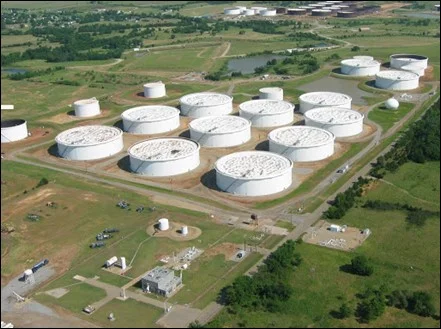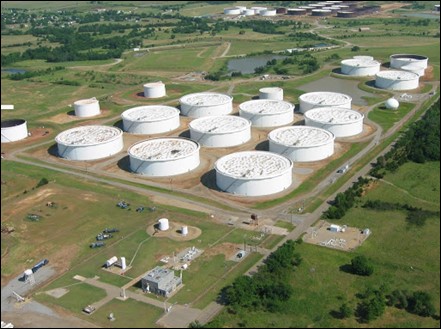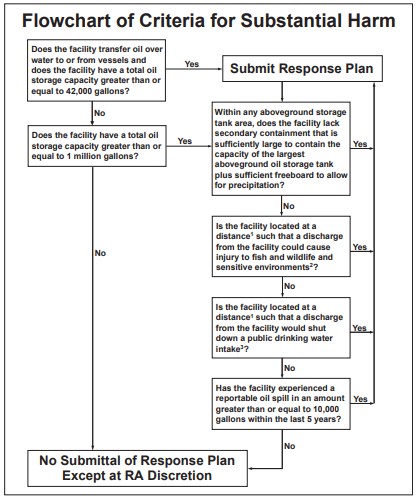SPCC Plans – The Importance of the Substantial Harm Criteria

Preparing and updating Spill Prevention, Control, and Countermeasure (SPCC) plans are part of GES’ core services. We have performed SPCC-related work at hundreds of facilities across the United States. In this post, we are highlighting the importance of the substantial harm criteria.

SPCC plans are prepared under Section 311(j)(1)(C) of the Clean Water Act, as amended by the Oil Pollution Act (OPA) of 1990. The purpose of this regulation is to prevent oil from reaching navigable waters and adjoining shorelines and to contain discharges of oil. The OPA was a result of recommendations from the EPA-formed SPCC Task Force that was created in 1988 in response to a 4,000,000-gallon oil spill from an above ground storage tank (AST) that discharged into the Monongahela River near Pittsburgh, Pennsylvania. SPCC plans are developed, and inspections are completed in accordance with 40 CFR 112, commonly referred to as the SPCC Rule.
The purpose of the substantial harm criteria is to determine if there are conditions present at t he facility that warrant preparation of a Facility Response Plan (FRP) that identifies potential releases and demonstrates a facility’s preparedness to respond to a worst-case oil discharge. A flow chart to evaluate the criteria is included in Appendix C of the 40 CFR 112. There are two situations where an FRP is required. The first is if the facility transfers oil over water and has a storage capacity ≥ 42,000 gallons. The second is if the Environmental Protection Agency (EPA) Regional Administrator (RA) determines that one is required. (Note: RA is the EPA Regional Administrator)
he facility that warrant preparation of a Facility Response Plan (FRP) that identifies potential releases and demonstrates a facility’s preparedness to respond to a worst-case oil discharge. A flow chart to evaluate the criteria is included in Appendix C of the 40 CFR 112. There are two situations where an FRP is required. The first is if the facility transfers oil over water and has a storage capacity ≥ 42,000 gallons. The second is if the Environmental Protection Agency (EPA) Regional Administrator (RA) determines that one is required. (Note: RA is the EPA Regional Administrator)
If neither of those requirements are satisfied, a facility with an oil storage capacity ≥ 1,000,000 gallons may require an FRP if any one of four other criteria are satisfied.

1. Inadequate secondary containment – Calculating secondary containment is a critical part of preparing an initial SPCC plan and subsequent reviews and inspections.
2. A spill history of ≥ 10,000 gallons of oil in the last five years – Review of spill history is a routine component of SPCC plan preparation and review and facility inspection.
3. Injury to fish or wildlife in sensitive environments – This is further defined in 59 FR 14713, but desktop tools can be used to assist in the evaluation.
4. Shut down of a public water intake – Data is often available online to identify potable water supplies in a given state, and 40 CFR 112 Appendix C Attachment C-III provides calculations for evaluating this potential.
The importance of the criteria listed above as #3 and #4 can easily be overlooked in this process. While professionals preparing SPCC and FRP plans may know how to identify potable supply wells, locating drinking water intakes from surface water is more challenging as information may not be publicly available for security or other concerns.
The substantial harm criteria is an important part of SPCC planning. If the criteria are satisfied, the facility must prepare an FRP to demonstrate that the facility is prepared to respond to a worst-case oil release. Knowing the sensitive human and ecological receptors that could be at risk is critical for effective response actions.